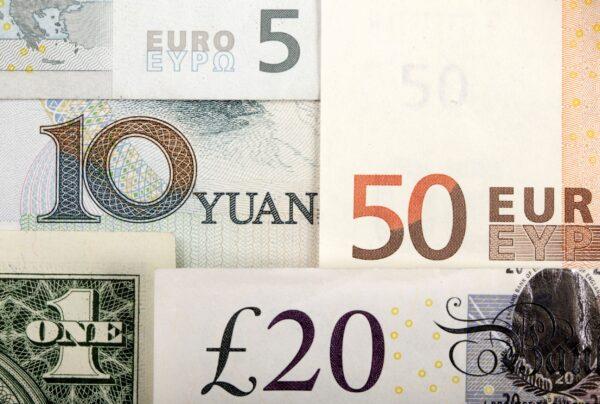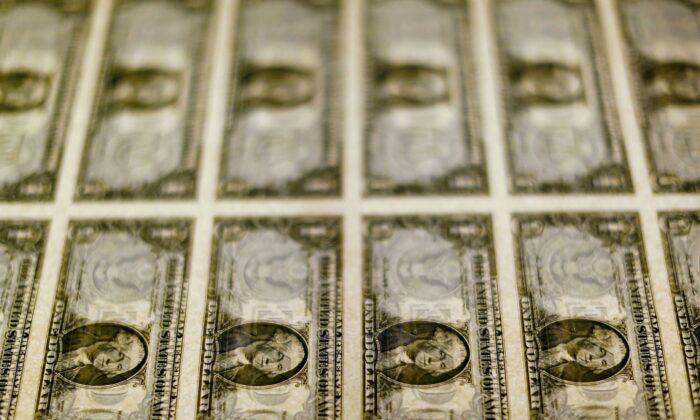LONDON—The dollar began the last quarter of 2021 near its highest levels of the year, and was headed for its best week since June as investors expected a hawkish-sounding Federal Reserve to lift U.S. interest rates sooner than its major peers.
Cautious market sentiment due to COVID-19 concerns, wobbles in China’s growth, and a Washington gridlock ahead of a looming deadline to lift the U.S. government’s borrowing limit also lent support to the dollar which is seen as a safe-haven asset.
Refinitiv’s measure of the dollar index stood at 94.313, having gained 1.1 percent so far this week, the largest weekly rise since late June.
Dollar index set for best week since June
“Last week’s Fed meeting added fresh life into the debate about a potential hike in the Fed funds rate in 2022,” said Jane Foley, head of FX strategy at Rabobank.
“This is positive for the USD on two fronts. Firstly the USD looks better on a straightforward interest rate differential perspective. Secondly, a hike in U.S. rates and a stronger USD will weigh on the growth outlook in EM.”
The growth outlook for emerging markets is already suffering on concerns of a slowdown in China and on fears of an energy crunch, Foley said.
“The result is that the USD benefits from a drop in risk appetite and flows out of higher risk EM markets.”
The euro was steady on Friday at $1.1582, but has fallen about 1.3 percent during the week, and through major support around $1.16, to touch its lowest levels since July 2020.
The yen bounced from a 19-month low overnight but has lost 0.6 percent for the week and twice as much in a fortnight as a rise in U.S. Treasury yields has drawn flows from Japan into dollars. It last traded at 111.21 per dollar.
Benchmark 10-year Treasury yields are up for a sixth straight week and real 10-year yields, discounted for inflation, are rising far more quickly than counterparts in Europe.
“As long as markets remain confident that the U.S. is going to start tightening monetary policy within a reasonable timeframe, the dollar should remain well supported,” said Societe Generale strategist Kit Juckes.
“The prospect of the European Central Bank keeping rates below zero while the Fed hikes should keep euro/dollar in the post-2014 range, with a center of gravity around $1.12–1.16,” he said.
Commodity currencies made a bounce on the dollar on Thursday following a Bloomberg report that China had ordered energy companies to secure supplies for the winter at all costs, but were back under pressure on Friday.

Beijing is scrambling to deliver more coal to utilities to restore supply amid a power crunch that has unsettled markets due to the likely hit to economic growth.
The Australian dollar fell 0.3 percent to $0.7203 and slumped 3.6 percent in the third quarter—the worst performance of any G10 currency against the dollar—as prices for Australia’s top export, iron ore, fell sharply. The New Zealand dollar slipped 0.2 percent to $0.6882.
Central banks in both countries meet next week, with the Reserve Bank of New Zealand seen hiking while the Reserve Bank of Australia is expected to stick with its forecast to keep rates where they are until 2024.
Sterling was also an underperformer last quarter, dropping 2.5 percent, and looks set to log its worst week in more than a month, weighed down by worries about a hawkish-sounding central bank in spite of growing supply chain problems.
Sterling eased 0.2 percent to trade just above a 9-month low at $1.3452.
Markets in Hong Kong and China were closed on Friday. Traders are awaiting U.S. personal spending and core consumption deflator data later in the day and nervously watching for any progress on the debate over raising the U.S. debt ceiling.
A deadline for authorizing extra Treasury borrowing looms in mid-October.





